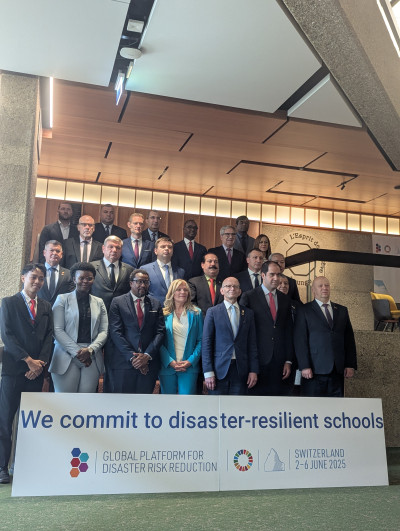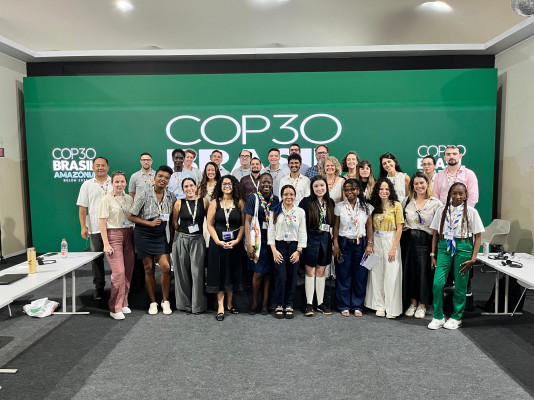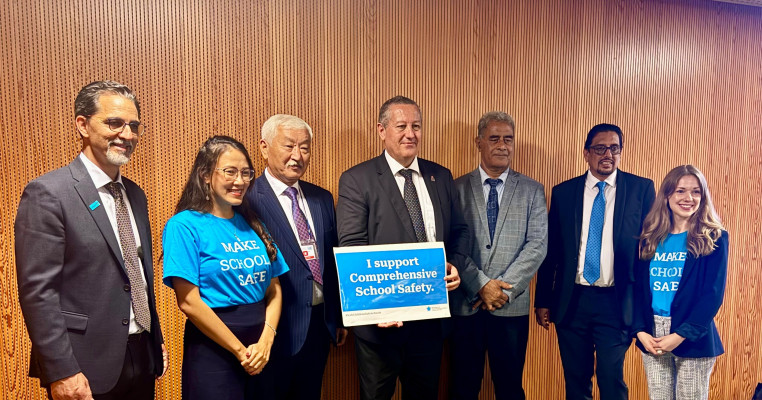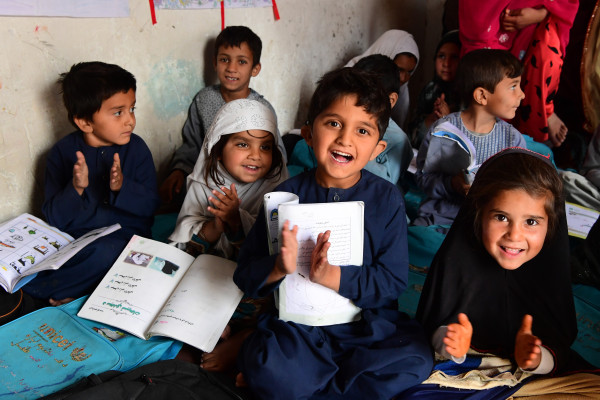Youth Voices: World spends billions on disasters, forgets to prevent them
Rio Ananda Andriana
By Rio Ananda Andriana, Youthfel Indonesia
The world seems to have grown accustomed to living in an expensive cycle of disasters. Every year, billions of dollars are poured into responding to crises that have already occurred, while prevention efforts lag far behind. For the younger generation, this pattern feels not only exhausting but deeply uncertain.
I, along with youth around the world, have grown up amidst recurring crises, watching our schools and learning spaces submerged in floods, feeling the heat intensify year after year, and seeing our homes collapse not merely because of nature’s power, but due to human negligence in managing risk. From all this, I’ve learned that rebuilding without learning to prevent is simply waiting for the next disaster to come.
The International Day for Disaster Risk Reduction 2025 is a moment of reflection for the world to ask how far we’ve invested in resilience, not just recovery. The 2025 theme,_ “Fund Resilience, Not Disasters,”_ is a call to remind us that financing prevention is not optional, it is an urgent necessity to safeguard the future of our generation.
A Costly Disaster Cycle We Keep Repeating
The world seems trapped in the same loop, a disaster strikes, aid flows in, we rebuild from the rubble only to watch it all collapse again in the years to come. This cycle illustrates the global lack of awareness and commitment to serious disaster prevention. For me and other young people concerned with disaster and climate crises, this is no longer a nightmare, it is a painful reality we live with every day.
According to the United Nations Global Assessment Report on Disaster Risk Reduction 2025, global disaster losses now amount to nearly USD 2.3 trillion annually, eleven times higher than previously estimated. Ironically, less than one percent of global public budgets are allocated to disaster risk reduction. These numbers show that the world still spends far more on responding to disasters than on preventing them.
This pattern is not confined to one region, it’s happening across the globe. The United Nations Office for Disaster Risk Reduction (UNDRR) reports that East Africa is trapped in an increasingly intense and repetitive cycle of floods and droughts. In Ethiopia, Kenya, and Somalia, the La Niña 2020–2022 phenomenon was recorded as the most severe in 70 years due to its prolonged intensity, resulting in four consecutive failed rainy seasons. The region had previously faced extreme rainfall in 2019–2020 followed by devastating floods, a prolonged drought from 2020 to 2023, and once again, severe flooding in 2023–2024. These extreme weather cycles reveal how little the world has truly learned from past disasters.
A similar situation unfolds across Asia. According to the Asian Development Bank (ADB), Asia is the most disaster-affected region in the world, experiencing both the highest frequency and impact of natural hazards. Data from ReliefWeb shows that by the third week of 2025, the ASEAN region alone had already recorded 59 disasters, including floods, landslides, storms, and volcanic eruptions, affecting Indonesia, Malaysia, the Philippines, and Thailand. This reality underscores that Asia, especially Southeast Asia now stands on the frontline of the global climate and disaster crisis.
In line with these trends, many countries including Indonesia, where I was born and raised, still fail to treat disaster risk reduction as an urgent development priority. The World Risk Report 2025, published by Bündnis Entwicklung Hilft and IFHV of the Ruhr-University Bochum, ranks Indonesia third among the world’s most disaster-prone countries, after the Philippines and India, with a Global Risk Index score of 39.80.

Ironically, despite such high vulnerability, funding for Indonesia’s National Disaster Management Agency (BNPB) continues to decline. Between 2011 and 2024, BNPB’s budget reached over IDR 2 trillion, yet in the 2026 Draft State Budget, it dropped drastically to just IDR 491 billion, the lowest in 15 years. As the frontline institution for disaster management, BNPB needs adequate resources to strengthen preparedness, equipment maintenance, and community resilience programs.
This reactive cycle must be broken. As long as the world remains more prepared to respond than to prevent, losses and suffering will continue to repeat themselves.
Prevention Is Not a Cost It Is a Promise
It is undeniable that prevention is often viewed as a financial burden rather than a long-term investment. Yet, according to the World Bank, every dollar invested in disaster-resilient infrastructure can save up to four dollars in potential economic losses. Similarly, the Global Commission on Adaptation reports that effective early warning systems can reduce disaster losses by up to 30 percent. These figures should remind us that prevention is not wasteful, it is the most rational and cost-effective step toward protecting lives and livelihoods.
Unfortunately, many governments still take a reactive stance. Investments in mitigation and adaptation are often dismissed as non-urgent simply because the results are not immediately visible. Yet every delay prolongs risk, and every policy that overlooks prevention is an act of postponing safety itself. Disasters do not wait for our readiness, and crises do not pause simply because funding has yet to be allocated. Preventive financing must therefore become a global priority, not an afterthought.
I see prevention not as a cost but as a promise to protect life, safeguard learning spaces, and secure a better future. In the Special Region of Yogyakarta, one of Indonesia’s most disaster-prone provinces, I have been part of a collective youth movement to promote the Safe School Program (Satuan Pendidikan Aman Bencana).
Since 2023, through the community I founded, Youth for Environmental Law Indonesia (Youthfel Indonesia), in collaboration with the Jogja Youth for Disaster Preparedness coalition (koalisi Kaum Muda Jogja Siaga Bencana) and with the support of Plan Indonesia, we have conducted various initiatives such as disaster education campaigns, evacuation drills, and school-based preparedness training. We aim to instill disaster awareness early on making safety and preparedness a culture, not merely a reaction when disasters strike.
In every school we visit, we see the same spirit, the desire to learn, to adapt, and to protect one another. This, to me, is the truest expression of prevention, not just numbers in a budget, but living acts of solidarity that nurture hope. Still, these youth-driven commitments cannot thrive in isolation. Our efforts to build community-based resilience need support especially from policymakers and funding institutions. Because funding resilience also means ensuring that the energy and ideas of young people do not fade for lack of resources.
When I had the honor of representing Indonesian youth at the Global Platform for Disaster Risk Reduction (GPDRR) 2025 in Geneva, I was struck by a statement from Mr. Kamal Kishore, the UN Secretary-General’s Special Representative for Disaster Risk Reduction. He emphasized that while countries have limited capacity for disaster risk reduction, many still overpromise and commit to targets that are unrealistic or worse, unfulfilled.
For me, his words serve as a reminder that promises without action are meaningless. For us the young generation, those promises are not just moral appeals, but calls to action we are already realizing through grassroots initiatives and meaningful participation in global forums. One of the most concrete ways to fulfill those promises is by channeling direct funding to youth-led initiatives, supporting local resilience efforts that grow from the ground up. Because young people should not only be included; we must be recognized as equal partners in building a disaster-resilient world.
Youth Are Not Waiting for the Next Disaster!
We, the young generation, have learned from countless disasters. We have grown up amidst uncertainty, watching the same negligence repeat year after year the failure to act before disasters caused by human recklessness occur. We refuse to remain victims of the same mistakes, because we know our future should not be determined by the unpreparedness of today’s generation. We are not waiting for the next landslide or flood to claim our tomorrow. We choose to act here and now for a more inclusive, fair, and resilient future for all.
From classrooms where preparedness is taught, to communities joining hands to plant trees in schoolyards, to global forums where we share ideas for a stronger world, I’ve learned that resilience is not only about being ready for natural disasters, it’s about transforming how we view the future itself. The world must understand that resilience is not a short-term project completed after one round of funding, but a lifelong principle that must be embedded in every policy, culture, and system. Resilience is not a slogan, it is a long-term commitment to humanity.
Yet we also understand that determination alone is not enough to drive systemic change. Youth-led resilience movements need sustained funding, meaningful participation, and inclusive policies. Too many youth initiatives fade not from lack of ideas, but from lack of support. Every dollar invested in youth education, innovation, and community action is not an expense, it is an investment in a safer, stronger, and more sustainable future. With the right support, grassroots initiatives born from solidarity and empathy can become the backbone of global resilience systems.
Young people don’t want to be invited only after disasters happen, we want to be trusted before they occur. I personally don’t wish to attend global forums merely as a symbol of participation, but to be equipped and empowered to take real action at the local level. Because a resilient future is not built from empty political promises, but from collective courage to change through small, consistent steps and through trust in youth as part of the solution.

As the world commemorates the International Day for Disaster Risk Reduction this week, I call on every leader, government, private sector, and stakeholder to fulfill the promise of “Fund Resilience, Not Disasters.” Not only for us who live today, but for the generations to come who deserve to inherit a safer, fairer, and more resilient world.
And ultimately, if the world truly wants to build a resilient future, then funding must also flow to young people to those working on the frontlines of change, in schools, communities, villages, and every small space where big ideas about resilience are taking root. Because funding youth means funding hope, and funding hope means investing in a stronger future. We are not waiting for the next disaster, we are already preventing it, collectively!
Rio Ananda Andriana is the founder of Youth for Environmental Law Indonesia (Youthfel Indonesia) and a youth activist with Plan International. Rio represented GADRRRES at the Global Platform for Disaster Risk Reduction in 2025.




